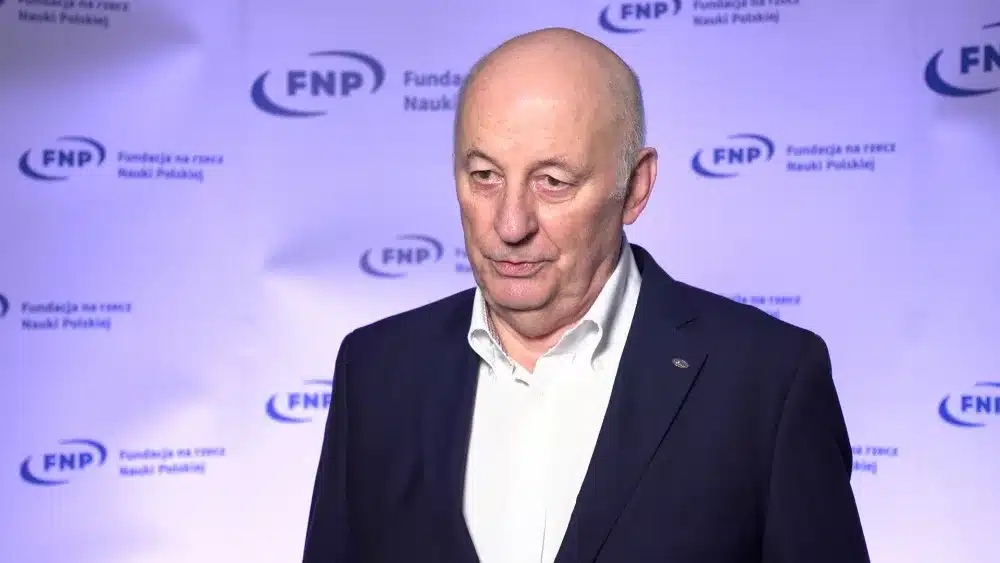International cooperation is one of the conditions for the advancement of science. This is why the Foundation for Polish Science (FNP) recognises and rewards the best international research teams with outstanding achievements. A Polish and French scientist, who jointly designed and synthesised dyes with fluorescent properties, received the Polish-French Scientific Award, granted by the FNP and the Académie des Sciences. Their discovery has the potential for broad application in the future, including in medicine and cancer treatment.
Increasing international cooperation is one of the goals of the Foundation for Polish Science which, for over 30 years, has been the largest source of non-budgetary science financing in Poland. The FNP awards achievements in international cooperation by granting two bilateral scientific awards, the Polish-German Copernicus Science Award and the Polish-French Scientific Award.
“Internationalising science is extremely important for the foundation. Therefore, we have the Polish-French awards that we talk about today, we have the Polish-German awards, we support their creation of centres of excellence to which we want people from different cultures, countries, and nationalities to come and do scientific work, discuss, argue, until they finally make some new scientific discovery,” said Professor Maciej Żylicz, President of the Foundation for Polish Science, to Newseria Biznes news agency.
The Polish-French Scientific Award named after Marie Curie-Skłodowska and Pierre Curie is a joint initiative of the FNP and the French Academy of Sciences – Académie des Sciences. It is awarded every two years, via competition, to a pair of scholars selected by a Polish-French jury, appointed by both institutions.
This year’s award, presented during a ceremonial gala on October 10, went to Prof. Denis Jacquemin from the Université de Nantes and Institut Universitaire de France, and Prof. Daniel Gryko, a chemist from the Institute of Organic Chemistry of the Polish Academy of Sciences. The scientists were recognised for their long-term collaboration in the field of organic synthesis and computational chemistry.
“When it comes to scientific projects, we always try to choose the best collaborators. That’s why it’s natural to go beyond the borders of our own country and build international teams,” says Prof. Denis Jacquemin from the University of Nantes and Institut Universitaire de France. “Together with Prof. Daniel Gryko, we are the freshly baked laureates of the Polish-French Scientific Award in the name of Marie Curie-Skłodowska and Pierre Curie for outstanding scientific achievements, the result of Polish-French research cooperation. As a team, we complemented each other perfectly: Daniel dealt with the synthesis of compounds, whereas my task was to calculate their properties. It’s a prestigious distinction and a great honour for both of us, as well as an incentive to continue our joint work.”
The two laureates have an enormous scientific output. The collaboration started in 2016, and their joint research yielded fluorescent dyes, which can find very broad applications, among others in medicine.
“Such dyes have a very wide application, for example in fluorescent probes. Most of what we know today about cell function comes from studies using fluorescent probes. Our research aims to improve the quality of these probes. That means we design the dyes together, select the best ones and make them in Warsaw, and my colleague Denis Jacquemin calculates their properties after synthesis. And sometimes we come up with super interesting compounds,” explains Prof. Daniel Gryko.
The researchers aim to commercialise some of these dyes, initially for their application in molecular biology.
“There are currently huge companies on the market producing fluorescent probes, that is their only product and they make good money from it. There are no such companies in Poland, and it’s our dream to set one up. In the long run, a great application would be dyes to help surgeons more precisely excise cancerous tissue than is currently possible. This is a challenge that many people around the world are working on. There are various ideas, and ours is to do this through selective fluorescent probes that will only glow when in a cancer cell,” announces Prof. Daniel Gryko.
The research conducted by Prof. Denis Jacquemin and Prof. Daniel Gryko contributed to significant progress in the field of luminescent materials and provided insight into the fundamental mechanisms governing light emission. The fluorescent dyes they designed and synthesised can potentially be used, for instance, in organic light-emitting diodes and in the fluorescent imaging of living cells. What’s more, their photophysical properties (the degree of their fluorescence) can be predicted even before their synthesis – i.e., the most efficient and the best-range glowing dye can be selected. This enables the creation of many different dyes.
One of the most interesting achievements of these scientists is the development of dyes that can emit light in the far infrared. It carries little energy and penetrates the human body, allowing to observe those elements that would otherwise be invisible.
“That’s a great achievement, the result of symmetric, Polish-French cooperation,” says Prof. Maciej Żylicz. “Without opening Polish science to the world, we won’t get noticed, we won’t be able to attract talents from abroad. All countries are currently competing for talents from all around the world, so we need to know how to find, attract them, and help them continue to develop in our country.”
